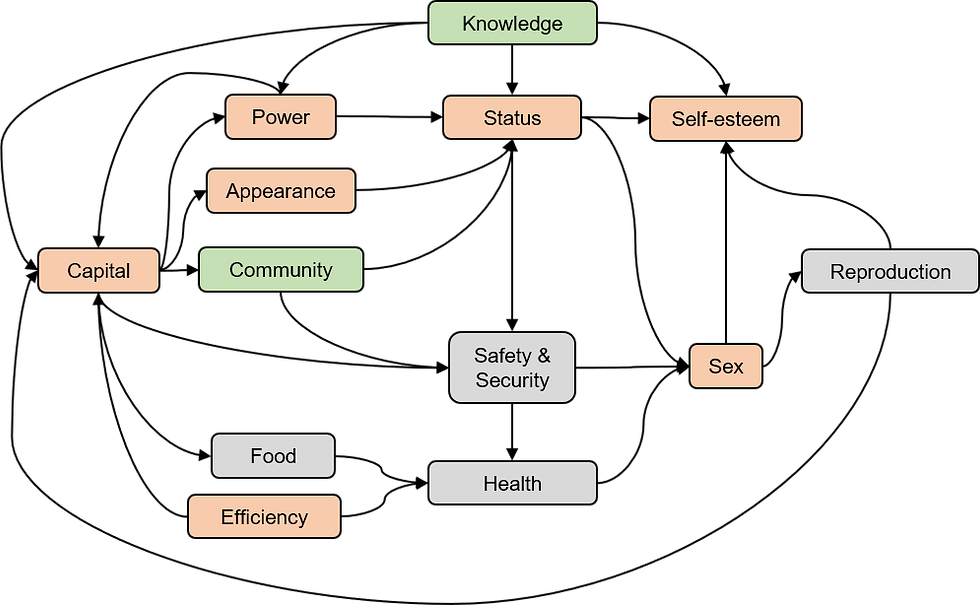Why do you use Instagram?
- Hubert Österle

- Oct 30, 2019
- 2 min read
Updated: Dec 20, 2022
Does Instagram make you happy? Or sad? Let´s try to find out, based on the QLM (quality of life model). It comprises 13 needs as the main drivers of our behavior. These factors are the motivations behind our actions, such as being active on Instagram.

Let’s look at the QLM using an example. The teenager Clara is at an exciting party. She proudly takes a selfie of herself and her friends and posts it on Instagram. How does that satisfy her needs?
Clara can present herself in her new outfit and the people she is socializing with at the party. This shows her followers her attractive appearance and the social status she is awarded by her community. In turn, her rank within her group and her self-esteem are increased. Her position and her power within her Instagram community are strengthened. That makes her more attractive to potential sexual partners and therefore for reproduction. The downside of these gains is the loss in capital (expenses for clothes and the party) and the effort (efficiency) to take the picture, post it on Instagram and deal with the responses. So the decision to be active on Instagram is mainly driven by the hope of increasing or maintaining status (rank). The impact on self-esteem depends on her expectation and her perception of her own status.

There is another side to being present on Instagram. What happens if one of Clara’s friends, let´s call her Heidi, is at a different party and is motivated by the same needs? She also takes a selfie and posts it on Instagram. When Clara sees that post, the value of her own post immediately shrinks, and that reduces her relative status. The very effects that meant gains in the case of her own post represent the opposite for Clara in the case of Heidi’s post, with two exceptions: Clara enjoys being in the same community as Heidi. Clara learns what´s going on in her community. She can observe what is important for her “competitors” and therefore develops her style and ultimately her values (knowledge).

These two examples reflect the immediate reactions to one´s own and to someone else´s post. These are typical hedonic reactions, direct effects on well identified needs. What is the eudaimonic value of Instagram for Clara and Heidi? We have to compare their life with and without use of Instagram. And that is really difficult. The eudaimonic impact is much less clear to be captured than the hedonic value. We could assume that the eudaimonic effect over time has no effect on the needs like power, appearance, community and status and as a consequence self-esteem, since one person´s improvement means another person´s deterioration and the positive and negative changes balance over time. But if all the friends except Clara are on Instagram and Clara is not visible there she probably loses in power, appearance, and status. She might even lose friends in her physical community. So how can we assess the eudaimonic value of Instagram for Clara?





Comments